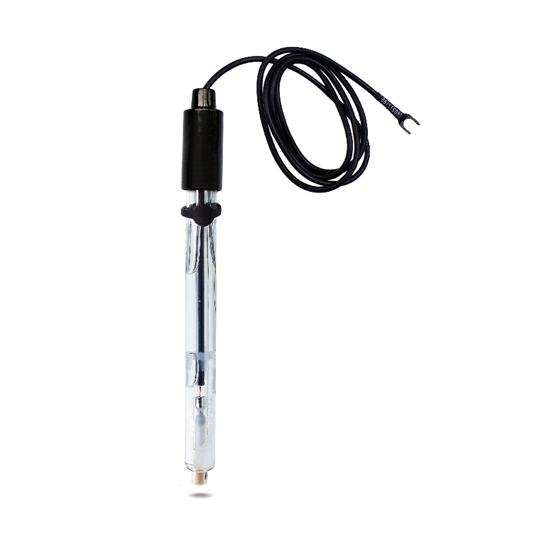
Why buy from us?
Lorem Ipsum is simply dummy text of the printing and typesetting industry.
Ask a Question About This Product
- Stock: In Stock
- Model: KOLAUT-RE-6802-01
- Weight: 1.00
- SKU: KOLAUT-RE-6802-01
Available Options
Calomel reference electrodes are stable and have well-defined potential, making them suitable for accurate and reproducible measurements in various electrochemical applications, such as pH determination and cell potential measurements.
Specification
| Model | KOLAUT-6802-01 |
| Electrode Type | Calomel (Hg/ Hg2Cl2) Reference Electrode |
| Reference Type | Calomel Single Salt Bridge Type |
| Salt Bridge Material | Ceramic Sand Core |
| Filling Liquid | 3.8mol/L KCl |
| Shell Material | Glass |
| Temperature Range | 5℃~55℃ |
| Dimension | φ12*120mm |
| Connector | U-Shaped Fork Piece |
Dimension
Application
Tips: Difference between saturated calomel electrode (SCE) and a silver/silver chloride electrode
The saturated calomel electrode (SCE) and the silver/silver chloride electrode (Ag/AgCl) are both reference electrodes used in electrochemical measurements. The SCE consists of mercury, mercurous chloride (calomel), and a saturated potassium chloride solution. It provides a stable and reproducible reference potential, commonly used in chloride-containing electrolytes. However, SCE has some drawbacks, such as toxicity and the potential for mercury contamination.
On the other hand, the Ag/AgCl electrode consists of a silver wire coated with silver chloride. It offers a non-toxic alternative with a stable potential, suitable for a wider range of applications. The Ag/AgCl electrode is especially useful in biological and environmental studies. Unlike the SCE, it avoids the environmental and health concerns associated with mercury. Both electrodes operate on the principle of a half-cell reaction involving chloride ions, but their composition and applications differ, allowing researchers to choose the reference electrode that best suits their experimental conditions.


















